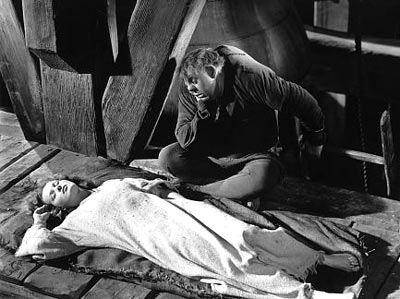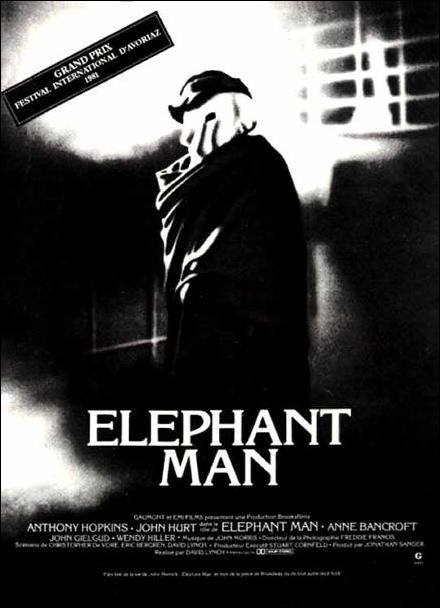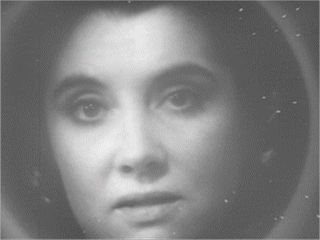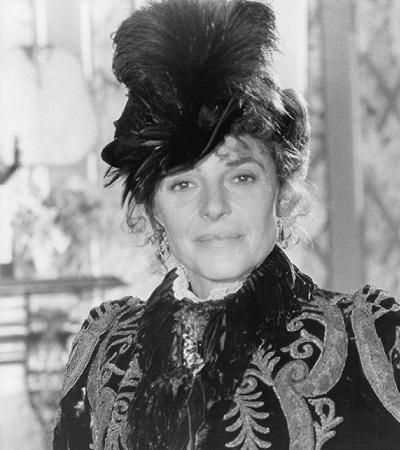Notre Dame(PART 2 OF 3)

(hunch05.jpg)

The 1939 film is considered by some reviewers to be the best of the many film versions of Victor Hugo's classic novel.

Do you think so, too?
Yes, I do. As a matter of fact, this movie later strongly influenced the 1996 version of The Hunchback of Notre Dame, produced by Walt Disney Feature Animation.

(hunch07.jpg)
1996 Animation Trailer
<iframe width="500" height="350" src="http://www.youtube.com/embed/DezyFYB2MMk" frameborder="0" allowfullscreen></iframe>

But kato, do you know that the 1939 movie is quite fifferent from the original novel?

Oh...quite different?...in what way?
Well... The main differences are that Esmeralda and Quasimodo remain alive at the end, unlike in the novel, in which Esmeralda is hanged and Quasimodo is presumed dead, but two years later a hunchback skeleton is found at her grave site.
Is that right?
Besides, the character of Frollo was heavily changed. Instead of being an archdeacon, he is a judge and a close advisor of King Louis XI, while in the novel they do not meet each other. Frollo's death was portrayed close to the original one, but a major difference is that in the novel he was watching Esmeralda's execution when Quasimodo killed him.
Oh, was he?
Furthermore, Phoebus, who is only wounded by Frollo in the novel, is killed by him in this 1939 film version. Therefore, as in the novel, Esmeralda is wrongly accused for the crime, but her attraction for Phoebus is not explored by the film after the incident.
I see...
The personal history of Esmeralda is ignored by the film. In the novel, it is revealed that she was not born as a gypsy and her mother is a recluse in Paris. In the film, her mother is not portrayed and neither is her background.
Gee... Amazing!... Diane, you're quite knowlegeable.
At the end of the film, Esmeralda is pardoned and is freed from hanging and then leaves with Gringoire and a huge crowd out of the public square. In the novel, Gringoire left Esmeralda with Frollo capturing her and saves her goat instead, resulting in Esmeralda's death. The film also makes it clear that Esmeralda eventually comes to love Gringoire, whereas in the novel, she merely tolerates him.
I didn't know that you're such a keen reseacher and cinefile.
Don't pull my leg, Kato. You can easily obtain such infomation on the Net.
Tell me, Diane, if the hunchback was based on the real figure at the time or not.
Good point, Kato,... well, In 2010, British archivist Adrian Glew discovered references to a real-life hunchback who was a foreman of a government sculpting studio in Paris in the 1820s. This person worked on post-Revolution restorations to the Cathedral. Hugo might have picked up this man as a model of Quasimodo.
I see...
You know, Kato, it was the first novel to have beggars as protagonists. Besides, it was the fist fiction to encompass the whole of life, from the King of France to Paris sewer rats, in a manner later co-opted by Balzac, Flaubert and many others, including Dickens. The enormous popularity of the book in France spurred the nascent historical preservation movement in that country and strongly encouraged Gothic revival architecture. Ultimately it led to major renovations at Notre-Dame in the 19th century led by Eugène Viollet-le-Duc. Much of the cathedral's present appearance is a result of this renovation.
Quite interesting!
Furthermore, the name Quasimodo has become synonymous with "a courageous heart beneath a grotesque exterior."
Diane, you just reminds me of the 1980 film "Elephant man."

(elephan2.jpg)
Frederick Treves (Anthony Hopkins), a surgeon at the London Hospital, discovers John Merrick (John Hurt) in a Victorian freak show in London's East End, where he is managed by the brutish Bytes (Freddie Jones).
Merrick is so deformed that he must wear a hood and cap when in public, and Bytes claims he is an imbecile.
Treves is professionally intrigued by Merrick's condition and pays Bytes to bring him to the Hospital so that he can examine him. There, Treves presents Merrick to his colleagues in a lecture theatre, displaying him as a physiological curiosity.
Treves draws attention to Merrick's most life-threatening deformity, his oversized skull, which compels him to sleep with his head resting upon his knees, as the weight of his skull would asphyxiate him if he were to ever lie down.
The ward nurses are horrified by Merrick's appearance, so Treves places him in a quarantine room under the watchful care of the formidable matron, Mrs. Mothershead (Wendy Hiller).
Mr. Carr-Gomm (John Gielgud), the hospital's Governor, is reluctant to house Merrick (who has thus far remained mute), as the hospital is not designed as a residence for "incurables".
To persuade Carr-Gomm that Merrick has potential, Treves coaches him to recite a few polite phrases. Carr-Gomm sees through the ruse, but as he walks away, both men are astonished to hear Merrick recite the 23rd Psalm. Shocked by this display of intelligence, Carr-Gomm allows Merrick to remain.
Merrick is gradually revealed to be sophisticated and articulate.
Carr-Gomm arranges a suite of rooms for him to reside in at the hospital, and Merrick passes his days reading, drawing and making a model of a church visible through his window. One day, Treves brings him to take afternoon tea at home together with his wife, Ann (Hannah Gordon).
Merrick, overwhelmed by the familial love he perceives in the domesticity about him, shows them his most treasured possession, a picture of his mother, and expresses his wish that she would love him if she could only see what "lovely friends" he now has.

(elephan4.gif)
Phoebe Nicholls as John's mother
Later, Merrick begins to receive society visitors in his rooms, including the celebrated actress Madge Kendal (Anne Bancroft).

(elephan3.jpg)
Anne Bancroft
He becomes a popular object of curiosity and charity to high society.
As these connections and visits increase, Mrs. Mothershead (who has charge of Merrick's daily care) complains to Treves that he is still being treated as a freak show attraction, albeit in a more upper class, celebrated style.
Bytes abducts Merrick to continental Europe, where he is once again put on show and subjected to cruelty and neglect. Treves, consumed with guilt over Merrick's plight, takes action against the night porter with the help of Mrs. Mothershead.
Merrick escapes with the help of his fellow freak show attractions, and makes it back to London. However, he is harassed by a group of boys at Liverpool Street station, and accidentally knocks down a young girl. He is chased, unmasked, and cornered by an angry mob, at which point he cries out: "I am not an elephant! I am not an animal! I am a human being! I ... am ... a ... man!", before collapsing. When the police return Merrick to the hospital, he is reinstated to his rooms.
He recovers a little but it is soon clear he is dying from chronic obstructive pulmonary disease. As a treat, Mrs. Kendal arranges an evening at the musical theatre.
Resplendent in white tie, he rises in the Royal Box to an ovation, having had the performance dedicated to him from Mrs Kendal.
That night, back at the hospital, Merrick thanks Treves for all he has done and finishes his model of the nearby church. Imitating one of his sketches on the wall—a sleeping child—he removes the pillows that have allowed him to sleep in an upright position, lies down on his bed and dies, consoled by a vision of his mother, Mary Jane Merrick, quoting Alfred Lord Tennyson's "Nothing will Die".
The Elephant Man
1980 Film Trailer
<iframe width="400" height="315" src="http://www.youtube.com/embed/z5gNBW5H_EU" frameborder="0" allowfullscreen></iframe>
SOURCE: "The Elephant Man (film)"
Wikipedia, the free encyclopedia

Do you like "The Elephant Man" more than "The Hunchback of Notre Dame"?

Well... I like both movies, but the elephant man impressed me greatly.
Oh...? Like what?
At the end, Merrick’s mother is smiling beautifully, staring at the camera, reminding Merrick, called “John,” and reminding me that nothing will die. Death is not an ending. It is just another change. He could move from a nightmare to a dream.
I see... the name Quasimodo has become synonymous with "a courageous heart beneath a grotesque exterior." So, Kato, how about the name John Merrick?
Well,... I'd say, the name John Merrick has become synonymous with "a noble heart beneath a grotesque exterior."
(To be followed)













